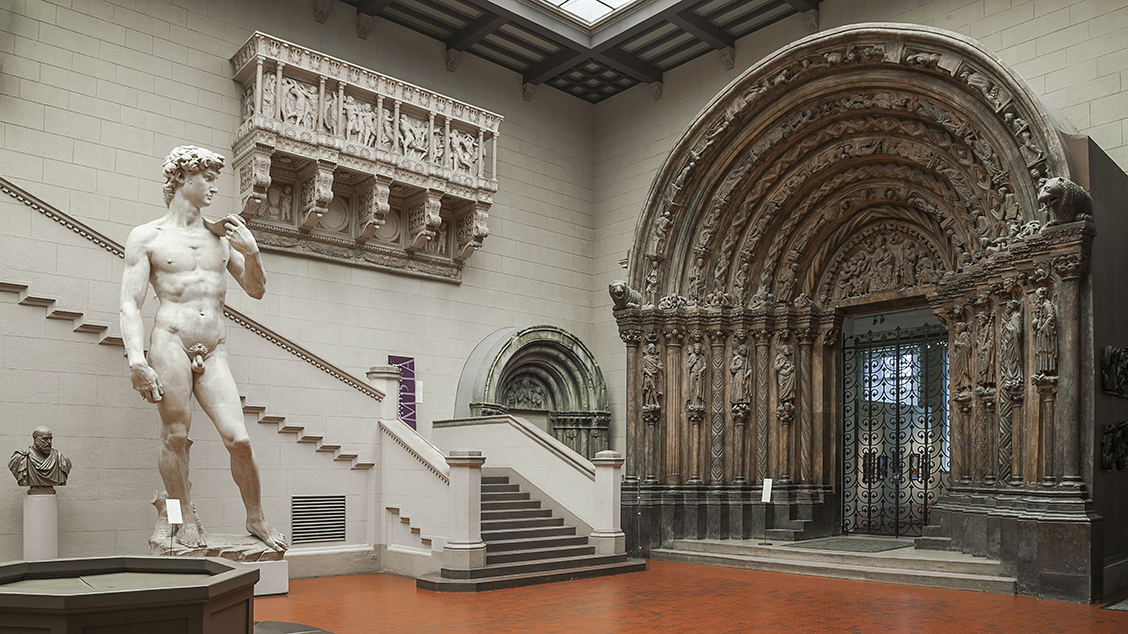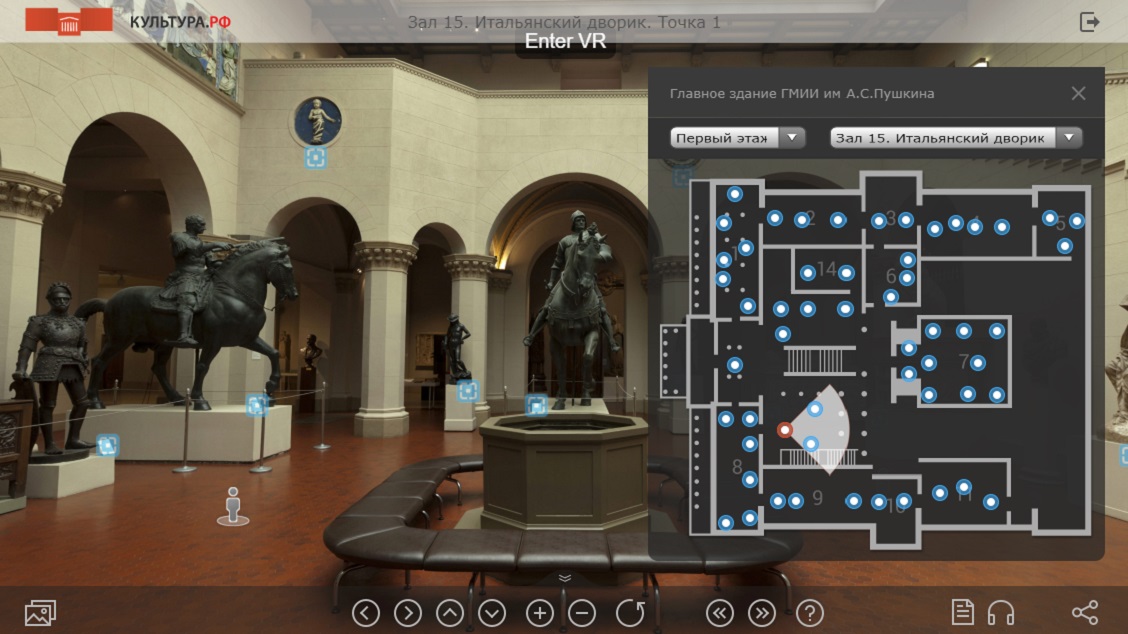The earliest work in this Gallery is the famous "Golden Gate" – a cast of the portal of the cathedral in the German town of Freiberg (early 13th century) built in the traditional forms of Romanesque architecture. In 1468-1474 the famous German sculptor of the Late Gothic era, Jörg Syrlin, created the choir stalls in Ulm Cathedral. German art of the 15th century is also represented by the Shrine of St. Sebald, from the workshops of Peter Fischer the Elder in Nuremberg and a number of casts from reliefs depicting the Passion of Christ, which were the work of German sculptors Veit Stoss and Adam Kraft.
Apart from German sculpture, works by sculptors from France and the Netherlands of the 15th and 16th centuries are also represented in this Gallery – such as the tomb of the Duke of Burgundy, Charles the Bold (1433-1477) by the Burgundian master sculptor, Jacques Iongelinque (1530-1608) or the painted statue of a mourner, striking for its naturalism, from the sculptured ensemble on the tomb of Philippe of Pau fashioned in approximately 1480 by the French sculptor Antoine de Mouturier.
Originally the creators of this Gallery had called it the "Christian Courtyard" since all the exhibits displayed in it could be traced back to the artistic tradition which had grown up on the basis of the Christian religious and philosophical world-outlook. Later this name was replaced by "Italian Courtyard". For the interior of this Gallery coloured casts from the reliefs of Andrea della Robbia were selected – "The Annunciation" and "Adoration of the Divine Child" were used and also a small tondo with the depiction of an infant in swaddling clothes, which had been part of a decorative series from the building of the famous Foundling Hospital in Florence. The
re-creation of the balcony from the Palazzo della Cancellaria (Palace of the Chancellery) in Rome fashioned in accordance with a design by the famous Italian architect of the High Renaissance, Bramante, can serve as an example of the way in which subjects and decorative motifs drawn from Classical art might be re-interpreted in Renaissance architecture.
The successfully achieved architectural impact of this Gallery made it possible to resolve the complex task of this display – arranging, within a limited space. examples of art belonging to different artistic periods and styles. The examples of architecture brought together in the Italian Courtyard reflect the stylistic diversity which was to become one of the key features of eclecticism – a trend characteristic of the second half of the 19th century. The columns and the staircase copied from the Bargello Palace, the portal of a medieval cathedral, sculptures by masters from Northern Europe and Italian majolica are harmoniously combined with the collection of works of monumental sculpture from the age of the Renaissance, which embellished the main squares of Florence, Venice and Padua.
Pride of place in the Italian Court is occupied by casts of two equestrian monuments erected in the 15th century to the condottieri Gattamelata and Colleoni in response to a decision taken by the Senate of the Venetian republic in Padua and Venice. The monuments were created by the illustrious sculptors, Donatello and Verrocchio. These same sculptors also fashioned for the Medici family small bronze statues depicting young David, victor over the giant Goliath – works that came to be regarded as masterpieces of the Early Renaissance. The plaster cast of the gigantic statue of David (in marble in the original) was a work of the young Michelangelo, which graces the main square of Florence and was regarded as the greatest embodiment of the heroic ideal in the age of the Renaissance.
The items exhibited in the Italian courtyard provide, as it were, an introduction to the Department of Medieval Sculpture and Italian Renaissance in the Museum's collection of casts.


